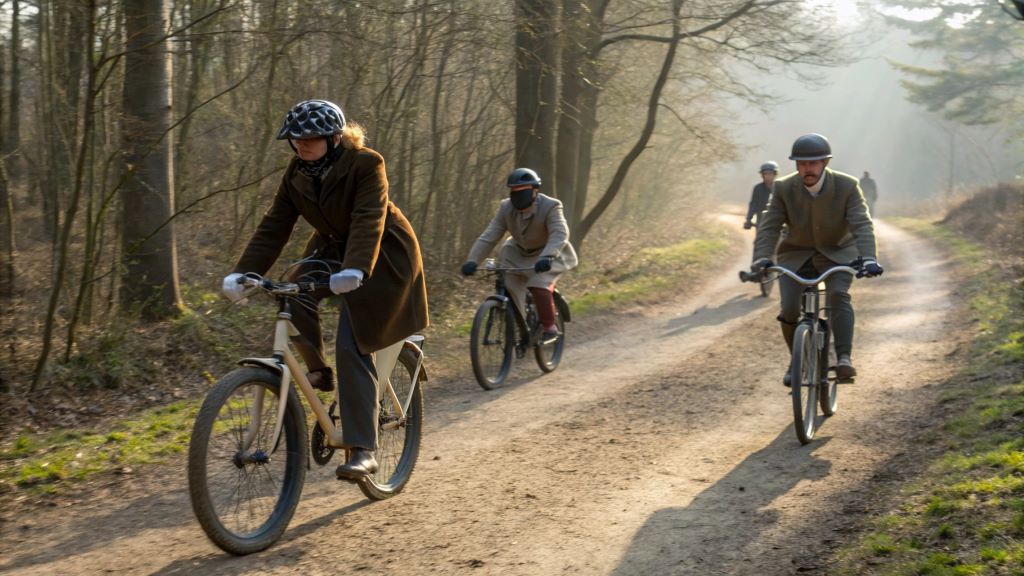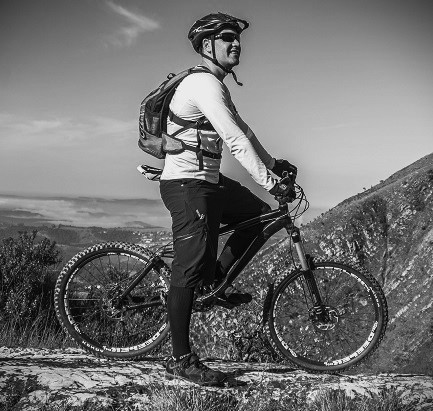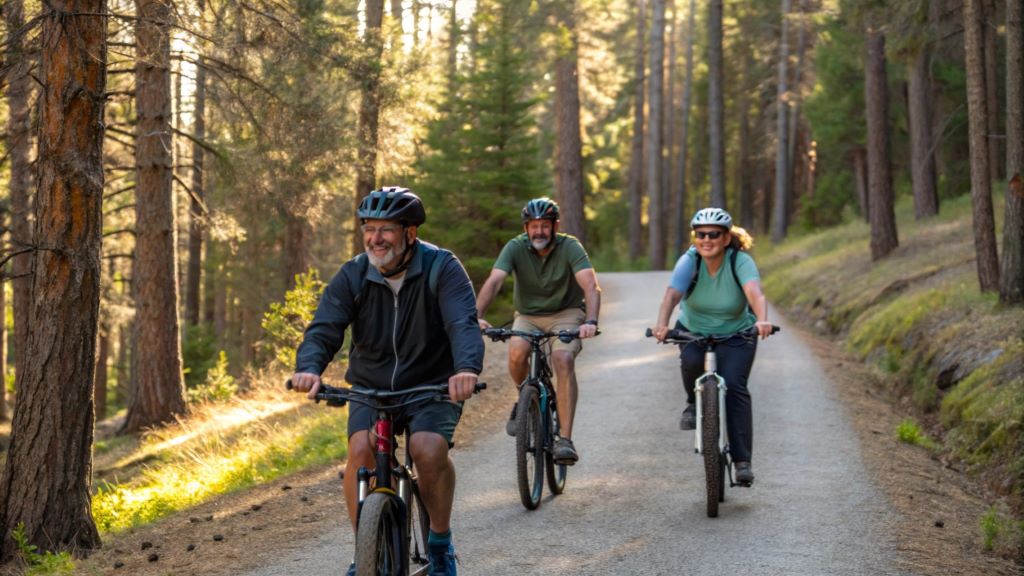At 55, I stood at the trailhead, heart racing, gripping my mountain bike. Could I still conquer the rugged paths? Riding mountain bikes in your 50s and 60s is more than a sport; it’s a journey of vitality and freedom. Many older adults embrace this adventure, defying age stereotypes. According to a 2023 study by the Outdoor Industry Association, over 30% of mountain bikers are now over 50, proving it’s never too late. This post explores how to ride safely, stay fit, and enjoy trails in your later years. Let’s dive into the thrill of mountain biking and rediscover the outdoors.
Why Mountain Biking Appeals to Older Adults
Mountain biking captivates those in their 50s and 60s with its blend of adventure and exercise. The sport offers a chance to reconnect with nature while boosting physical and mental health. Trails challenge your focus, keeping your mind sharp. Additionally, biking builds community, as riders often join group rides or clubs. For me, joining a local biking group at 53 opened new friendships and trails I’d never explored.
The physical benefits are significant. A 2022 study by the Journal of Aging and Physical Activity found that regular biking improves cardiovascular health by up to 20% in older adults. However, it’s not just about fitness. The thrill of speeding down a hill or navigating a rocky path sparks joy and confidence, proving age is just a number.
Preparing Your Body for the Trails
Riding mountain bikes in your 50s and 60s demands physical readiness. Start with strength training to build leg and core muscles. Exercises like squats and planks enhance balance and endurance. Stretching daily improves flexibility, reducing injury risks. I began yoga at 54, and it transformed my ability to handle tight turns on the trail.
Cardiovascular fitness is key. Aim for 150 minutes of moderate aerobic activity weekly, as recommended by the CDC. This could include brisk walking or light rides. Additionally, consult a doctor before starting, especially if you have health conditions. Proper preparation ensures you enjoy biking without overexertion. Listen to your body and progress gradually to avoid strain.
Essential Warm-Up Tips
- Dynamic stretches: Leg swings and arm circles prepare muscles.
- Short rides: Start with flat trails to ease into biking.
- Hydration: Drink water before and during rides to stay energized.
Choosing the Right Bike and Gear
Selecting the right mountain bike is crucial for older riders. Opt for lightweight frames, like aluminum or carbon, to reduce strain. Full-suspension bikes absorb shocks, protecting joints. I switched to a full-suspension bike at 56, and my knees thanked me after bumpy rides. Test bikes at a local shop to find the best fit.
Gear matters too. A well-fitted helmet is non-negotiable—choose one meeting CPSC standards. Padded shorts and gloves enhance comfort and grip. Additionally, invest in quality tires suited for your local trails. Proper equipment boosts confidence and safety on every ride.
Mastering Trail Techniques for Safety
Riding mountain bikes in your 50s and 60s requires smart techniques to stay safe. Learn to shift your weight back on descents to maintain control. Practice braking smoothly to avoid skids. I once misjudged a steep drop at 57, but proper body positioning saved me from a fall. Start with beginner trails and progress slowly.
Cornering and climbing skills are vital. Lean into turns and keep pedals level to avoid obstacles. For climbs, use low gears and steady pacing. A 2021 study by the American College of Sports Medicine noted that proper technique reduces injury risk by 15% in older athletes. Take a local clinic or watch tutorials to refine your skills.
Key Safety Techniques
- Body positioning: Keep elbows bent and knees relaxed.
- Trail scanning: Look ahead to anticipate obstacles.
- Rest breaks: Pause regularly to avoid fatigue.
Staying Fit and Avoiding Injuries
Maintaining fitness is essential for enjoyable mountain biking. Regular rides, even short ones, build stamina. Cross-training with swimming or hiking complements biking by strengthening different muscles. I found that adding swimming at 58 improved my endurance without joint stress. However, overdoing it can lead to injuries like strains or falls.
To prevent injuries, prioritize recovery. Rest days allow muscles to heal, and foam rolling eases tightness. Wear protective gear like knee pads for added safety. According to the National Institute on Aging, older adults who stretch and rest reduce injury rates by 25%. If pain persists, see a doctor promptly. Balance effort with recovery to keep riding strong.
Finding the Right Trails

Choosing trails suited for your skill level makes mountain biking rewarding. Beginner trails with gentle slopes are ideal for starting out. Apps like Trailforks help locate nearby paths with difficulty ratings. At 55, I explored local trails with smooth dirt paths, building confidence before tackling rocky routes.
Intermediate trails offer more challenge but require caution. Research trail conditions and avoid overly technical paths initially. Joining a biking club can guide you to safe, scenic routes. Additionally, check weather forecasts to avoid slippery conditions. Exploring trails gradually ensures you enjoy the ride while staying safe and in control.
Building a Supportive Biking Community
Mountain biking thrives on community. Joining a local club connects you with riders who share tips and encouragement. At 56, I attended a group ride and learned new techniques from seasoned bikers. Clubs often organize events tailored for older riders, fostering camaraderie and skill growth.
Online forums and social media groups also offer support. Popular platforms provide trail reviews and advice. Engaging with others boosts motivation and helps you stay committed. Whether online or in-person, a biking community makes every ride more enjoyable and inspiring.
Overcoming Mental Barriers
Riding mountain bikes in your 50s and 60s can feel daunting. Fear of falling or doubting your stamina is common. I hesitated at 54, worried I was too old for trails. However, starting small and celebrating progress built my confidence. Visualization techniques, like imagining a successful ride, help calm nerves.
Mental resilience grows with practice. Set achievable goals, like completing a short trail, and reward yourself. Mindfulness techniques, such as deep breathing, reduce anxiety before rides. Connecting with supportive riders also boosts confidence. Embrace challenges as opportunities to grow, and you’ll find biking empowering at any age.
Read More: Top 5 Mongoose mountain bike 2025
Conclusion
Riding mountain bikes in your 50s and 60s is a thrilling way to stay active and embrace adventure. With proper preparation, the right gear, and safe techniques, you can conquer trails with confidence. The sport offers physical fitness, mental clarity, and a vibrant community. My journey from hesitant beginner to passionate rider proves it’s never too late to start. So, grab a bike, hit the trails, and rediscover the joy of movement. Share your biking stories or tips in the comments below, or spread this article to inspire others to ride!
FAQs
Is mountain biking safe for people in their 50s and 60s?
Yes, with proper gear, training, and trail selection, it’s safe. Consult a doctor first.
What type of bike is best for older riders?
Full-suspension bikes with lightweight frames reduce joint strain and improve comfort.
How can I avoid injuries while mountain biking?
Warm up, use protective gear, and ride within your skill level to stay safe.
Are there beginner-friendly trails for older adults?
Yes, apps like Trailforks list beginner trails with gentle slopes for safe riding.
How do I find a mountain biking community?
Join local clubs or online groups like MTB Project for support and group rides.
Read More:
Mountain Bikes for Women: Discover the Perfect Ride for Adventurous Ladies!
How Much Does a Mountain Bike Weigh?

Welcome to outdoorxsports.com! I’m Russell, your guide to the awesome world of mountain biking. This blog is all about building a community of riders who love to share their passion for the sport. Expect inspiring stories, local trail recommendations, fun challenges, and tips for making the most of your time on two wheels.

